AUGUSTE RODIN
- his life, his work (6)
|
|
|
|
|
1896
|
Rodin continues working on the statue of Balzac and now models
after a more athletic person.
He continues to support Camille from a distance, by referring her to Félix Faure,
President of the Republic, but Camille rejects the invitation, pretending
she "wouldn´t have a thing to put on for such an occasion".
Exhibition at the Museum Rath in Genf; Rodin donates three sculptures to
the museum.
He works on the sculpture of the Argentinian President Sarmiento.
|
|
1897
|
 Scandal about the statue of Balzac: it provokes the public's
displeasure because of the association with an erected phallus; other
cynical reactions interpret the Balzac as Narcissus, who masturbates
under his protecting coat. As a matter of fact, Rodin had created a nude
study of Balzac with a stiff penis in his left hand, before he had started
covering him with cloth. Scandal about the statue of Balzac: it provokes the public's
displeasure because of the association with an erected phallus; other
cynical reactions interpret the Balzac as Narcissus, who masturbates
under his protecting coat. As a matter of fact, Rodin had created a nude
study of Balzac with a stiff penis in his left hand, before he had started
covering him with cloth.
The Balzac statue also is the occasion for his last correspondence with
Camille by the end of 1897. Camille further develops her own style of narrative sculpture, but feels she is not
accepted as Rodin's peer by the artistic establishment.
Maurice Fenaille publishes his first essay about 142 drawings of Rodin
with a preface by Octave Mirbeau.
|
|
1897
|
Foundation of the Secession of Vienna
|
|
1898
|
Rodin exhibits the 'Balzac' and 'The Kiss' in the Galérie des
Machines at the Champ des Mars.
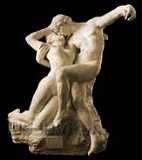 The Société des Gens de Lettres, no longer presided by Rodin's
supporter Zola, rejects the sculpture of Balzac;
an intense press campaign arises against Rodin; but others defend him
and the art collector Auguste Pellerin offers to purchase the plaster. In
the end, Rodin sells his Balzac plaster neither to his friends, who in his
eyes are too much associated with the Dreyfus camp, nor to Pellerin, but keeps it for
himself in his studio in Meudon. Although his supporters assure him that
his Balzac is a work of genius, Rodin will never try to realize a
commissioned monument again.
Only in 1939, the Balzac monument will
be cast in bronze, to be placed at the Boulevard Raspail. The 1897
plaster model of the Victor Hugo Monument was only cast in 1964, to be
placed at the intersection of the Avenue Victor Hugo and Avenue
Henri-Martin.
The Société des Gens de Lettres, no longer presided by Rodin's
supporter Zola, rejects the sculpture of Balzac;
an intense press campaign arises against Rodin; but others defend him
and the art collector Auguste Pellerin offers to purchase the plaster. In
the end, Rodin sells his Balzac plaster neither to his friends, who in his
eyes are too much associated with the Dreyfus camp, nor to Pellerin, but keeps it for
himself in his studio in Meudon. Although his supporters assure him that
his Balzac is a work of genius, Rodin will never try to realize a
commissioned monument again.
Only in 1939, the Balzac monument will
be cast in bronze, to be placed at the Boulevard Raspail. The 1897
plaster model of the Victor Hugo Monument was only cast in 1964, to be
placed at the intersection of the Avenue Victor Hugo and Avenue
Henri-Martin.
The Barbediènne Foundry obtains a license to produce a mass bronze
edition of the 'Kiss' and 'Eternal Springtime', in several sizes, over a
period of 20 years.
|
|
1899
|
Together with Judith Cladel, the daughter of his friend Léon Cladel, Rodin travels to Belgium and The
Netherlands; there she organizes the first important touring exhibition of
Rodin's work.
Rodin receives a commission for a monument of Puvis de Chavanne.
Rodin sees Camille's 'Maturity' at the 1899 exhibition of the Societé
Nationale des Beaux-Arts as President of the sculpture section.
Camille is awarded a state commision to cast the group in bronze, but the
allocation of the necessary state funds is blocked; Camille suspects an
insulted Rodin has intervened - which probably was the case.
In his studio, Rodin engages many amateur models,
dancers, acrobats, and encourages them to move around freely. Together
with Bourdelle and Desbois, he creates the Institut Rodin at 132
boulevard du Montparnasse, to teach young sculptors after these
principles.
|
|
1900
|
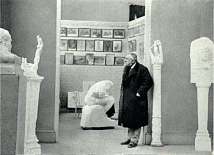 Rodin has too little time for his teaching duties, so the Institut Rodin is closed again
in April. Rodin has too little time for his teaching duties, so the Institut Rodin is closed again
in April.
During the Universal Exhibition, Rodin erects his
own pavillon at the Place de l‘Alma
in Paris. On 400 sqm, Rodin shows 150 works; with this prestigious retrospective Rodin
reaches a new public and earns international
appreciation. In the following years his work is
shown in several European and American cities; the prices of ordered
portraits start to increase. Especially the wealthy American public
discovers the French sculptor and starts commissioning busts and casts.
|
|
1901
|
Picasso's first exhibition in
Paris.
Death of Henri de Toulouse-Lautrec.
|
|
1901
|
Exhibition at the Biennale of Venice and at the Dritte
Sezession in Berlin.
Numerous commissions for busts.
By now, Rodin runs a large "factory", where
numerous mould makers, reducers, pointers, roughers and stone carvers help him to reproduce his
clay models in plaster and bronze or translate them
into marble, to satisfy this increasing public demand for his work. 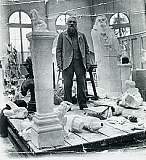 Many
young, talented sculptors, like Jean Escoula, Ernest Nivet, Jules Desbois,
Jean Baffier, Victor Peter, François Pompon, Jacov Nicoladze, Charles Despiau and Antoine Bourdelle have worked at Rodin´s
ateliers as assistants for a longer or shorter period of time.
Many
young, talented sculptors, like Jean Escoula, Ernest Nivet, Jules Desbois,
Jean Baffier, Victor Peter, François Pompon, Jacov Nicoladze, Charles Despiau and Antoine Bourdelle have worked at Rodin´s
ateliers as assistants for a longer or shorter period of time.
But for the
younger generation, like Constantin Brancusi, Jacques Lipchitz and
Aristide Maillol, Rodin appears like an overmighty father-figure, from
whom they have to win a distance in order to develop their own
style.
In his atelier in Meudon, Rodin collects a great quantity of studies and
fragments, especially single hands: his abattis.
|
|
1902
|
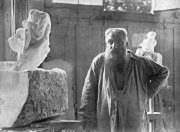 The photographer Edward Steichen makes a series of photos of the
artist and his sculptures. Before, Rodin had co-operated with a number of
other photographers, like Druet, Bulloz, Haweis & Coles, to create
photographic records of his work and even represent his sculptures at
exhibitions. The photographer Edward Steichen makes a series of photos of the
artist and his sculptures. Before, Rodin had co-operated with a number of
other photographers, like Druet, Bulloz, Haweis & Coles, to create
photographic records of his work and even represent his sculptures at
exhibitions.
Rodin stays in England during the installation of his 'John the Baptist' in the Kensington-Museum
with a dinner in his honour.
On the occasion of his exhibition in Prague he travels through
Czechoslovakia with Alfons Mucha and meets Gustav Klimt.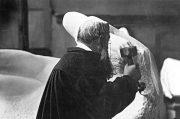
First meeting with the poet Rainer Maria Rilke, who proposes to write a
book about him.
Emile Zola dies on 30 Sept. 1902 by a carbon monoxide accident.
The company 'Alexis Rudier', run by Alexis's son Eugène and his widow, becomes
Rodin's permanent
foundry for all bronze casts.
Work on 'The Hand of God' and 'The Hand of the Devil'.
|


|